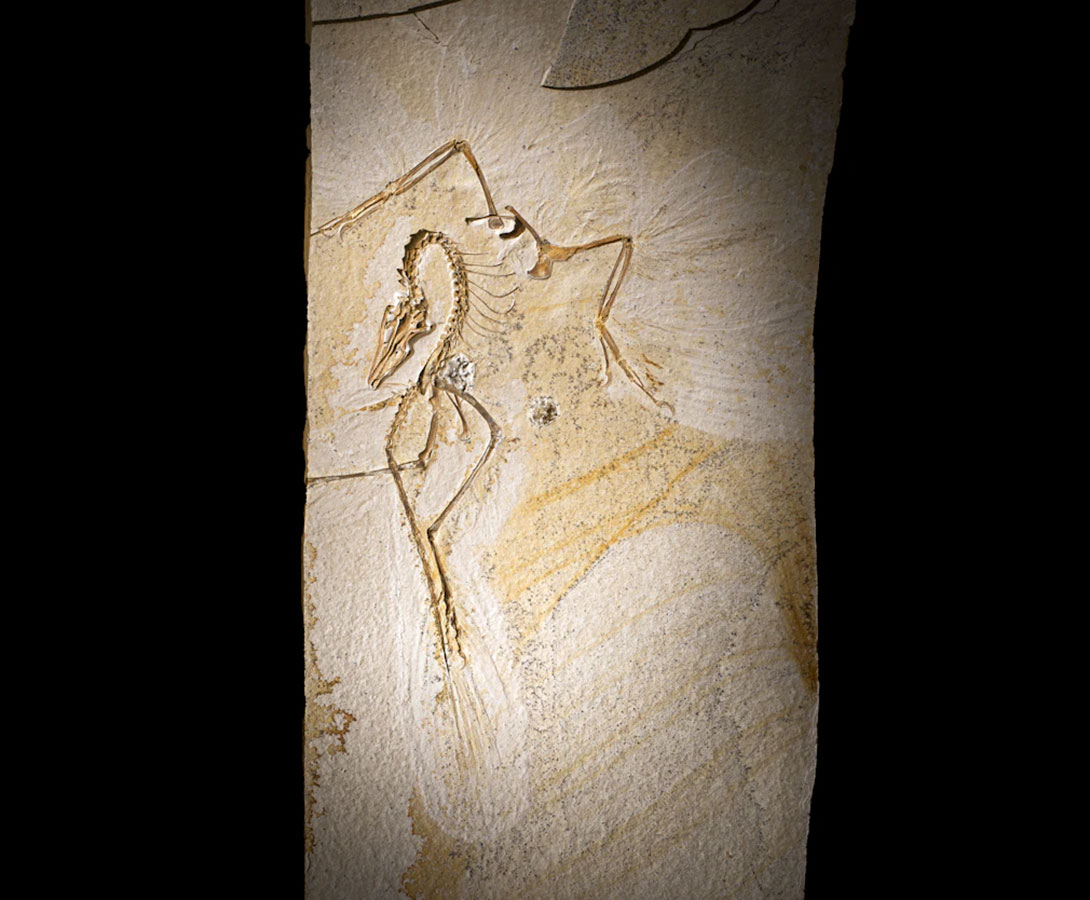Chicago museum acquires new specimen of famed Archaeopteryx

AN EXQUISITELY preserved fossil of the earliest-known bird Archaeopteryx, a pigeon-sized specimen revealing new anatomical details of a creature whose 19th century discovery lent support to Charles Darwin’s ideas about evolution, has been acquired by the Field Museum in Chicago and will go on public display.
The museum announced on Monday the acquisition of the fossil, which it said had been in the hands of a series of private collectors since being unearthed in southern Germany sometime before 1990. It has the best-preserved skull, vertebral column and soft tissues of the 13 known Archaeopteryx specimens, the museum said.
“No single specimen tells us the whole story of this animal. Most previous specimens are incomplete, crudely prepared, and/or crushed, limiting the data they can provide,” Field Museum paleontologist Jingmai O’Connor said. “The Chicago specimen preserves soft tissues never before seen in any other specimen and new information about the skeleton that help us better understand how this bird lived and its precise relationship with non-avian dinosaurs.”
Archaeopteryx lived about 150 million years ago during the Jurassic Period. Birds evolved from small, feathered dinosaurs, and are part of the dinosaur lineage — indeed, the sole survivors from that lineage of a mass extinction 66 million years ago caused by an asteroid striking Earth. Archaeopteryx boasted reptilian traits like teeth, a long, bony tail, and claws on its hands, alongside bird-like traits like wings formed by large, asymmetrical feathers.
The fossil is nearly complete, missing only the tip of one finger, Ms. O’Connor said. The fossilized impressions of feathers are extensive, revealing a tract of wing feathers not preserved in the other specimens, Ms. O’Connor added.
The fossil possesses the only complete Archaeopteryx vertebral column — including two tiny vertebrae at the tip of the tail showing it had 24 vertebrae, one more than previously thought, Ms. O’Connor said. Another unique feature is the scales on the bottom of Archaeopteryx’s feet, Ms. O’Connor added.
It remains in a limestone slab because of the fragility of the bones and other features. After being delivered to Chicago in August 2022, museum fossil preparators Akiko Shinya and Connie Van Beek spent more than 1,400 hours using tiny drills to remove rock and expose the bones and other features.
The largest Archaeopteryx specimen is about the size of a raven. This one is tied for the smallest.
“Archaeopteryx lived on an arid, fairly sparsely vegetated archipelago visited by seasonal storms. It seems to have been adapted for life on the ground, like many living birds, and we hypothesize it was capable of only bursts of flight and perhaps gliding down from trees,” Ms. O’Connor said.
Darwin in 1859 published his theory of evolution by natural selection. Building on the notion that organisms can change over time, the British naturalist proposed that new species arise from earlier ones and that species best adapted to their environment are more likely to survive and pass on the genes underpinning their success.
The “gravest objection” to his theory, Darwin noted, was the lack at the time of fossils of transitional forms. The 1861 discovery in Bavaria of Archaeopteryx, combining reptile-like and bird-like features, provided support for Darwin’s theory.
“I think it’s amazing how one fossil can teach us so much. This one fossil taxon showed us birds are dinosaurs, helped to prove natural selection as a mechanism for evolution, and still remains after 160-plus years one of the most researched and important fossil species of all time,” Ms. O’Connor said.
The museum — already home to the skeleton of Sue, perhaps the biggest and best-preserved Tyrannosaurus rex — did not disclose the price paid for the Archaeopteryx fossil. From Tuesday it will go on display for about a month, then return later in a permanent exhibit.
A 2015 German law requires newly discovered Archaeopteryx fossils to stay in Germany. This specimen was sold outside of Germany in 1990, meaning it was already out of the country before that statute was passed, the museum said. — Reuters



